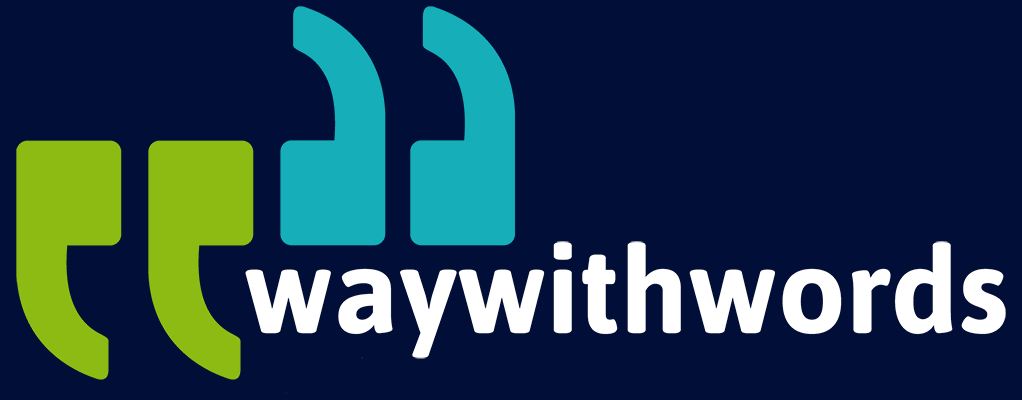What Industries Rely on Customised Speech Datasets?
Where Industry-specific Speech Data Becomes Indispensable
Customised speech datasets have become the silent architects behind the systems that understand us. From smart assistants and call-centre bots to medical dictation tools and legal transcription systems, the ability of machines to process and respond to human speech accurately depends on one fundamental ingredient — the quality and relevance of the data they are trained on and, in turn, the audio recording quality.
Yet not all speech is created equal. The way a surgeon dictates a case note, a banker conducts a compliance call, or a pilot communicates with air traffic control involves very different vocabularies, structures, and acoustic conditions. This is where industry-specific speech data becomes indispensable. It gives voice-driven AI systems the contextual intelligence they need to operate effectively in specialised environments.
Why Industries Need Specialised Speech Data
Human language is remarkably complex. Every sector develops its own lexicon, rhythm, and conversational etiquette — a unique dialect shaped by years of shared practice. Healthcare professionals speak in shorthand filled with abbreviations and medical jargon. Legal practitioners use precise terminology and formal phrasing. Financial analysts blend numbers with nuanced compliance language. Without training on domain-specific datasets, speech recognition systems struggle to cope.
Specialised speech data solves this problem by embedding domain knowledge into the model’s learning process. When a dataset captures authentic speech patterns from a specific industry, the resulting AI system recognises contextually relevant phrases and reacts accordingly. This reduces transcription errors, improves automation accuracy, and enhances trust in voice-based technologies.
Another key reason industries require specialised data is the variability of speech conditions. Background noise in a hospital emergency room differs vastly from that in a call centre or retail floor. Tailored datasets incorporate these environmental characteristics, helping algorithms distinguish speech from ambient sounds. Similarly, multilingual or accent diversity within a workforce demands datasets that represent regional pronunciation patterns and dialects.
Finally, there’s contextual phrasing and role-based interaction. For instance, in a financial services environment, the language between a client and an advisor differs from that between two internal analysts. Understanding these contextual subtleties allows AI systems to detect intent, emotion, or even potential compliance breaches — something generic datasets cannot achieve.
In essence, industries need specialised speech data not just for accuracy, but for credibility. Without it, voice technology risks misunderstanding the very professionals it aims to assist.
Key Industries Using Custom Datasets
The demand for custom voice dataset use cases has surged across multiple verticals. Each industry has unique challenges that off-the-shelf models fail to address. Let’s explore the most prominent sectors investing in tailored datasets.
Healthcare
Medical speech data underpins technologies like clinical dictation tools, patient-note automation, and diagnostic voice analysis. Doctors, nurses, and radiologists each use distinct terminologies — often in stressful, noisy environments. By training AI models on authentic healthcare recordings, systems can transcribe case notes accurately, extract medical codes, and even flag potential health anomalies from vocal biomarkers. Hospitals and research labs also rely on annotated datasets to train models that detect early signs of conditions such as Parkinson’s or depression through voice changes.
Legal
Law firms and court systems are increasingly turning to speech-to-text solutions to handle vast quantities of recorded material — hearings, depositions, and client consultations. Legal speech data must capture nuances like speaker identification, formal register, and complex syntax. Specialised corpora allow AI systems to handle overlapping dialogue, legalese, and procedural language while maintaining a verified chain of accuracy for compliance and archiving purposes.
Finance
In finance, accuracy is both operational and regulatory. Financial institutions record thousands of hours of customer service and compliance calls each week. A vertical AI audio training approach ensures that speech models recognise key phrases linked to KYC (Know Your Customer) protocols, investment disclosures, or anti-money-laundering procedures. The result is improved monitoring of communication integrity and reduced risk of misinterpretation during audits.
Retail
Retail and e-commerce rely heavily on voice interfaces at the point of sale (POS) and within customer-support ecosystems. Training models on real customer interactions — complete with regional accents, product names, and emotional tones — allows brands to build natural-sounding assistants and automated service tools. Custom datasets make it possible for AI to respond accurately to queries like “Do you have this in medium?” or “Apply my loyalty discount,” without confusion.
Aviation
In aviation, the importance of speech accuracy cannot be overstated. Air traffic control (ATC) communications follow strict phraseology, yet must be interpreted instantly and reliably. Specialised datasets in aviation capture this controlled language, varied accents from international pilots, and critical acoustic conditions (engine noise, radio interference). These corpora help train systems for simulation, safety research, and automated monitoring of ATC transmissions.
Across these industries, the common thread is trust. Tailored speech data builds systems that professionals can rely on, transforming spoken information into precise, actionable insight.

Tailoring Datasets for Specific Use Cases
Creating a custom dataset isn’t simply about recording speech — it’s about designing data that reflects reality. Each use case demands careful consideration of linguistic, acoustic, and emotional parameters to ensure the resulting model performs under real-world conditions.
Accent and Dialect Targeting
Speech varies dramatically across regions, even within a single language. A voice assistant trained solely on North American English will struggle with South African, Indian, or Scottish accents. Accent-targeted datasets ensure AI systems understand a wider range of speakers. In multilingual environments, they also include code-switching examples — moments where speakers naturally blend languages, as often happens across Africa and Asia.
Noise Modelling
Background noise presents one of the toughest challenges for speech AI. Real-world recordings may include typing, ambient chatter, traffic, or machinery. Instead of trying to eliminate noise, dataset designers incorporate it intentionally to train models that can distinguish signal from interference. By exposing models to these complex soundscapes, accuracy improves when systems are deployed in hospitals, factories, or retail spaces.
Emotional Tone and Speaker Roles
Human speech carries emotional cues — urgency, calmness, frustration — that shape meaning. Emotionally tagged datasets help conversational AI detect sentiment and adapt responses accordingly. For example, a customer service bot can shift tone when sensing irritation, or a healthcare assistant can adopt a more empathetic approach when recognising distress in a patient’s voice.
Equally important is speaker role identification. In a corporate meeting transcript, understanding who is the manager versus the client changes how responses are summarised or categorised. Training data that marks speaker roles gives AI systems the ability to interpret conversation dynamics rather than merely transcribe words.
Linguistic Annotation and Metadata
Each dataset must be richly annotated — with labels for entities, timestamps, pauses, hesitations, or overlapping speech. These annotations provide context that raw audio lacks. Metadata such as speaker age, gender, location, and device type further refine model adaptability.
In short, tailoring speech datasets is both an art and a science. The more faithfully a dataset mirrors the intended environment, the more intelligent, adaptable, and human-like the resulting AI becomes.
Vendor or In-House Data Collection?
Organisations embarking on voice-AI initiatives often face a pivotal decision: should they build their own dataset or partner with a specialised provider?
In-House Collection
Building an in-house corpus offers complete control over data quality, compliance, and proprietary ownership. Enterprises with strict confidentiality requirements — such as banks or government agencies — often prefer this route. However, the process is resource-intensive. It involves recruiting diverse speakers, obtaining consent, managing annotation teams, and ensuring data security. The technical infrastructure for collection, storage, and processing can also be costly to maintain.
In-house collection makes sense when:
- The domain language is highly proprietary or confidential.
- Sufficient budget and time are available for multi-stage dataset development.
- The goal is to maintain exclusive intellectual property over the resulting data.
Partnering with a Vendor
Working with an established dataset provider streamlines the process dramatically. Vendors specialising in industry-specific speech data bring expertise in large-scale collection, quality assurance, and compliance with data protection laws like GDPR or POPIA. They can recruit native speakers across demographics, manage multilingual transcription pipelines, and deliver datasets ready for machine learning ingestion.
Providers like Way With Words combine human-verified accuracy with advanced technologies for dataset annotation and validation. Outsourcing allows companies to focus on model development rather than data logistics.
Vendor collaboration is ideal when:
- The company needs rapid dataset delivery.
- Projects demand large, diverse, or multilingual data samples.
- There’s a requirement for ongoing dataset expansion or updates.
Ultimately, many organisations adopt a hybrid approach — developing sensitive data in-house while relying on external partners for scale, diversity, or cross-language datasets. The best decision depends on the balance between control, cost, and time-to-market.
ROI of Industry-Tuned Speech AI
The return on investment for tailored speech data extends far beyond accuracy metrics. When voice-driven systems understand the nuances of a specific sector, they deliver tangible business value across multiple dimensions.
Accuracy and Efficiency
Improved model accuracy directly translates into time and cost savings. In healthcare, this means fewer transcription errors and faster report turnaround times. In finance, it means reduced manual review of compliance logs. High-fidelity datasets eliminate the need for repeated corrections, freeing professionals to focus on higher-value tasks.
Enhanced Customer Experience
Voice-enabled systems trained on relevant data create smoother user interactions. Customers no longer have to repeat themselves to virtual agents, and professionals can dictate notes or commands naturally. This intuitive engagement fosters satisfaction and brand trust — critical factors in competitive markets such as retail or telecommunications.
Regulatory Compliance
Industries like law and finance operate under strict regulatory scrutiny. Customised datasets help AI models identify compliance breaches — for instance, missing disclosure statements or improper phrasing. Automated monitoring of voice communications not only reduces legal risk but also creates auditable records of accountability.
Automation and Scalability
Tailored speech data forms the backbone of scalable automation. Contact centres can automate call summaries; hospitals can process clinical notes in real time; aviation teams can analyse thousands of ATC communications for training and safety purposes. The broader the dataset’s relevance, the more effectively automation scales across functions.
Strategic Advantage
Organisations that invest early in vertical AI audio training gain a long-term edge. Proprietary datasets become valuable intellectual assets that competitors cannot replicate easily. Over time, these assets improve with feedback loops — the system learns from its own interactions, refining accuracy and insight generation.
The ROI of customised speech AI is therefore multi-layered: operational efficiency, risk mitigation, user satisfaction, and strategic differentiation. It turns data from a cost centre into a competitive advantage.
Final Thoughts on Industry-specific Speech Data
As industries evolve toward voice-driven workflows, the demand for customised speech datasets continues to expand. What began as a technical necessity has become a strategic imperative — one that bridges human expertise with machine intelligence. Whether in a hospital, courtroom, trading floor, or cockpit, speech data is no longer just sound. It’s structure, intent, and meaning — the raw material of intelligent communication.
Organisations that understand this shift will lead the next wave of voice-AI innovation, transforming how we document, decide, and connect.
Resources and Links
Way With Words: Speech Collection – Way With Words specialises in designing and delivering high-quality, industry-specific speech datasets for machine learning and AI development. Their speech-collection services span multiple languages and environments, offering both real-world and studio-quality data. With human-verified transcription and annotation, they ensure precise, ethical, and scalable datasets used in sectors such as healthcare, law, finance, and technology. Their expertise bridges the gap between raw voice data and machine-ready training corpora.
Domain Adaptation: Wikipedia – This resource explains how machine learning models can be adapted from one domain to another — a key concept behind customising speech recognition systems for specific industries. It outlines methodologies for training models to recognise and perform effectively within targeted linguistic or environmental contexts, forming the theoretical foundation for modern speech dataset design.
